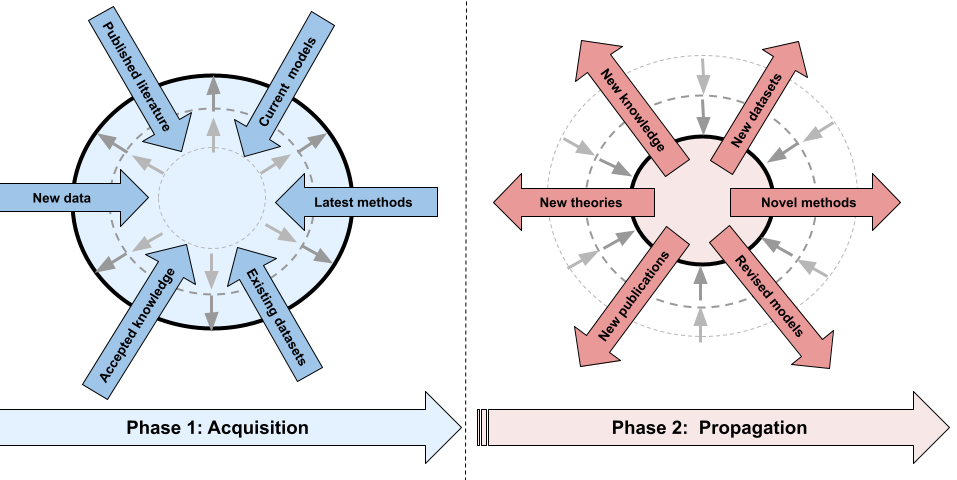CIRSS conducts research and develops tools and services to advance real-world scientific and scholarly practices. Our faculty, staff, and students address problems related to the trustworthiness of scientific results including data curation, quality, and integration; provenance capture and storage; semantic modeling; and research transparency and reproducibility. Our research is broadly organized into two thematic areas: (1) discovering, integrating, and harnessing scientific knowledge, and (2) producing, describing, and sharing verifiable results and research artifacts. These thematic areas share common theoretical and technical integration framework.
- Focus Area 1 includes knowledge graph approaches and technologies, arguments and claims frameworks, citation network analysis, and NLP approaches for extracting knowledge from publications, with the specific aim of assisting researchers in the assembly of new datasets in light of this knowledge.
- Focus Area 2 includes the study of scientific practices and implementation of infrastructure in service of open science and FAIR research practices. This includes the study of knowledge infrastructures and scientific domains; research data management, curation, transparency, and reproducibility; information modeling; measurement of policy and infrastructure impact; infrastructure inclusivity and accessibility; and the transfer of research findings and application of infrastructure for education and outreach.
A two-phase model of research studies: Acquisition and Propagation

Research and data lifecycles often are represented as sequences of six or more distinct phases such as envision, plan, discover, create, generate, process, analyze, share, preserve, reuse, etc. CIRSS research is grounded in a simpler model that divides activities comprising the typical research study into just two phases: acquisition and propagation.
The earlier acquisition phase of a study is characterized by an overall inward flow of knowledge and data into a project and a resulting increase (expansion) in the total amount of information actively under consideration. The latter propagation phase is characterized by the net outward flow of data and knowledge from the study into the surrounding body of scientific knowledge, and a corresponding decrease (contraction) of the total information yet to be shared with the community. Analogous to the diastolic and systolic phases of the cardiac cycle of the mammalian heart, the two phases of a research study, according to this model, respectively pull in knowledge and (pre-existing and new) data, then push out new knowledge and new data sets that subsequently flow to future research studies where the cycle is repeated and further advances in the associated field of research sustained.